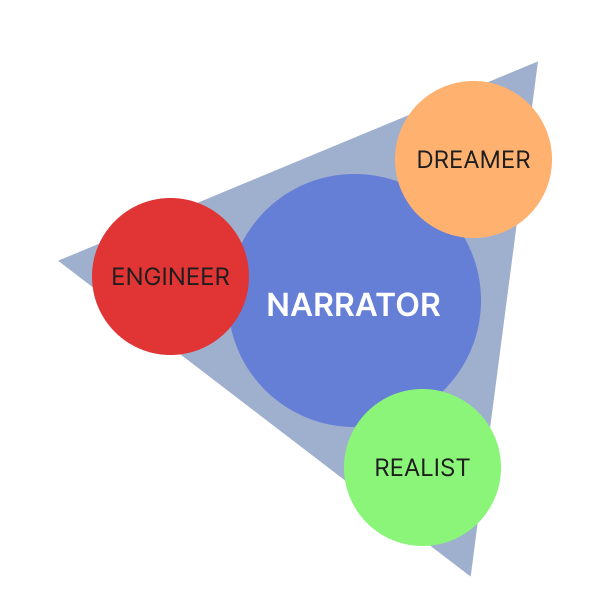Planning
How can you invest your time and energy to effectively switch minds between The Dreamer, The Engineer, The Realist and The Narrator.

Vision without action is a daydream. Action without vision is a nightmare
Principles
- Great Day
- Weekly Cycle-Plan
- Monthly Cycle-Plan
- Quarter-Year Strategy
- Project Management
- Execution Debrief
Context
Productivity
Personal habits to work on improving through better planning.
Sleep
Sleep bolsters how our brains remember something. Deep sleep (non-rapid-eye-movement sleep) can strengthen memories if the sleep occurs within 12 hours of learning the new information.
Over doing it lessens retention, makes you unproductive and unhappy
Exercise
Learn at an optimal rate by using the Pomodoro Technique to schedule breaks that relieve brain fatigue
Exercise freshens the brain as well as maintaining health
Drink Water
Water keeps the body functioning optimally. Drinking water helps with cognitive performance. Dehydration, can seriously affects mental function forcing the brain to work harder.